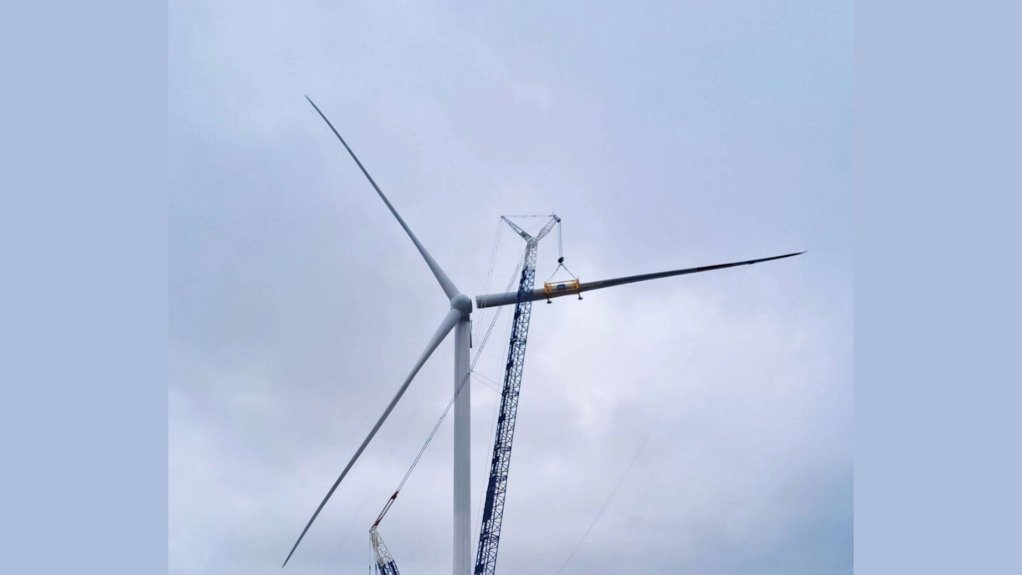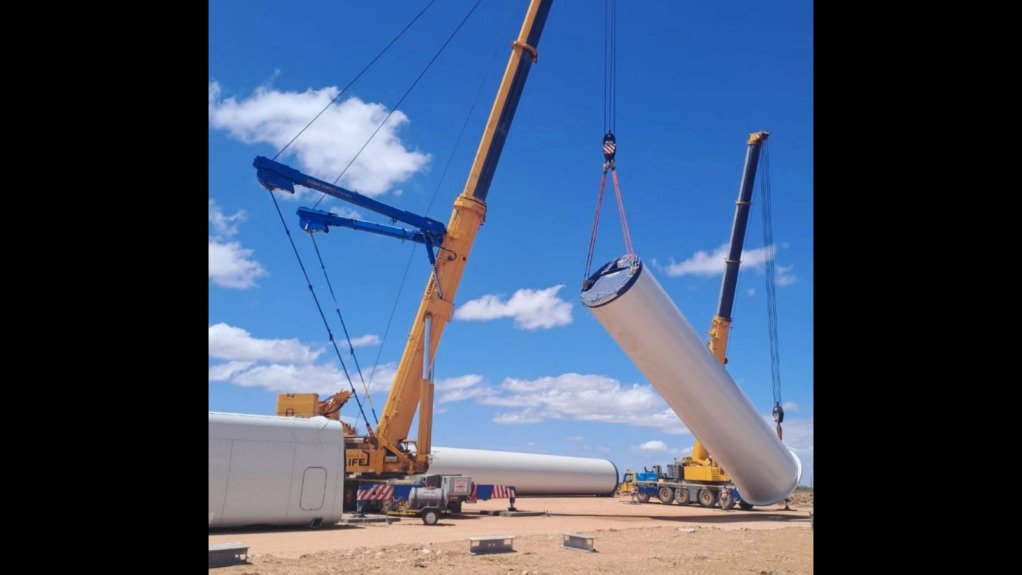With wind energy becoming a key pillar in the transition to renewable energy, Midrand-based crane rental agency Concord Cranes regional director Richard Reid notes that, while wind turbines appear straightforward, the development and operation of a wind farm involves highly complex logistics.
In a report by industry organisation the South African Wind Energy Association (SAWEA) it is stated that wind energy is increasingly becoming a leading driver of South Africa’s transition to a future built on renewable energy.
In March 2025, SAWEA estimated that over 3.5 GW of the 63.4 GW of South Africa’s installed capacity is generated from 37 wind power plants operating in the country – contributing about 46 480 GWh yearly.
“Although solar power is more widely adopted – especially at the residential level – wind farms are purely mechanical . . . but the logistics and planning behind getting a wind farm operational are highly complex,” says Reid.
Additionally, with an updated Integrated Resource Plan set to be released later this year, wind energy is projected to contribute between 69 GW and 76 GW of new capacity by 2050. Reid notes that this will present significant opportunities for investment, industrialisation and job creation.
Delivering Infrastructure
With wind power generation, the components are large and heavy, requiring precise logistics management to enable efficient rollout of wind farms.
In “wind-rich” landscapes, such as the Eastern and Western Cape provinces, Concord Cranes is helping to power the country’s renewable-energy future.
“Since June 2025, we started supporting [independent power producer] African Clean Energy Developments in the construction of a 144 MW wind farm. Our 260-t crawler crane, operated by a team of 12 to 20 experts over an 11-month project, offloads equipment from vessels in the laydown area at the Port of Coega in Gqeberha, and then reloads it on demand for delivery to the site in Murraysburg,” states Reid.
He emphasises that the sheer scale of the work requires detailed planning as well as significant financial commitments.
Reid says the first phase focuses on port logistics, particularly the offloading of all the turbine components, such as blades, tower sections and nacelles, into the port laydown area for storage.
“This 24-hour round-the-clock operation requires cranes, specialised vehicles and rigging crews and can take up to seven days,” he explains.
Subsequently, components are reloaded onto specialised vehicles for transportation to site. Additionally, a detailed route survey is used to identify obstacles along the way, with all the necessary permits and police escorts being arranged in advance.
Reid states that the delivery of a set of three blades requires a convoy of about ten vehicles, excluding the delivery trucks.
He points out that, by car, the drive from Port of Coega to Murraysburg takes about 4 hours, however, with these oversized loads and the complexity of the operation, a layover is often required.
Once the components arrive on site and assembly cranes offload them, the second phase of operation, building the turbines, can take place.
“The turbines themselves can reach heights of 120 m. Positioning the nacelle, which contains the drivetrain and weighs between 80 t to 120 t, and then attaching the rotor and blades at heights of up to 130 m must be done in near wind-free conditions, often in the freezing early hours of the morning,” Reid elaborates.
The third phase comprises repair and maintenance of existing turbines. Reid explains that this involves acquiring and transporting spare components to site, providing cranes and riggers, and the removal of damaged parts.
“Every employee or subcontractor must have valid medical certificates, working-at-height certificates and certificates of competence,” Reid adds.
Additionally, they require letters of appointment, labour market information, letters of good standing, professional driving permits and confirmation of public liability cover. Every contract also requires the inclusion of a detailed risk assessment, method statement, safe operating procedure and lifting plan.
Reid notes that while wind farms are a relatively simple and scalable way of producing electricity, establishing them is an “intricate logistical ballet” with countless moving parts.
“Each of these must be managed carefully, with continuous improvements in processes to ensure that South Africa can take full advantage of its abundant wind resources and power the country’s economic growth and a sustainable future for the next generation,” Reid concludes. ![]()







